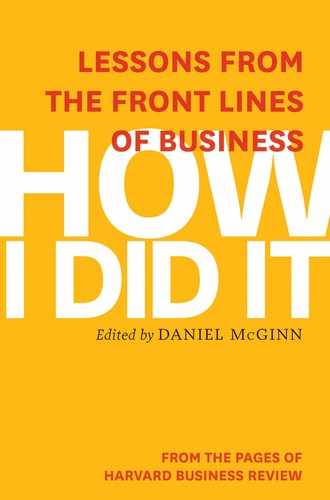Introduction
For more than a century, business schools have been developing ways to teach students the basic tools of business—how to create and understand accounting documents, analyze cash flows, and appraise the strengths and weaknesses of strategic choices.
These tools and others like them can be vital to managers who are starting their careers, but their value typically diminishes as a person’s responsibilities increase. The reason is simple: The higher an executive advances, the more likely the job will involve making complex decisions that rely less on tools, and more on wisdom.
That’s especially true for chief executives. According to one rule of thumb, chief executives are never asked to make easy calls—if the decision was easy, it never would have reached the CEO’s desk in the first place. It’s the hard choices that come one after another, all day and every day.
It’s not possible to teach the wisdom required to make these decisions, since wisdom is a function of experience. But it is possible to improve decision making over time by repeatedly observing and simulating decisions made by others. This is why quarterbacks sit in darkened rooms, watching films of opposing teams’ defenses. It’s why Navy Seals study after-action reports to understand what went right (and wrong) on past operations. It’s also why, nearly a century ago, B-schools (led by Harvard Business School) began using case studies to try to expose students to real-life business problems in hopes that simulating and debating the choices made by managers would help aspiring leaders put theory into practice.
The essays in this book are a singular contribution to this tradition. Like case studies, they take readers inside the C-suite, but they go further, giving inside detail and perspective about the decisions made by the chief executives involved—told in their own words.
Beyond the bona fides of their authors—current and past leaders of companies including Google, Xerox, General Electric, DuPont, Burberry, and many others—the most striking element of these narratives is their candor. The public has a tendency to view top executives as polished, decisive, and infallible (and in fact some executives work hard to burnish this image). However, the CEOs in many of these essays admit to being uncertain or nervous. They get angry. They screw up. “We spent years trying and failing,” writes the CEO of IMAX, describing his 20-year struggle to find a workable strategy. “We were wrong,” writes the CEO of MacLaren, describing a stroller recall as “one of the most difficult times in my business life.” “I remember thinking . . . ‘We’re screwed,’” writes Google’s Eric Schmidt, describing his misgivings the morning the company went public.
Often, when CEOs agree to share a story with a business magazine, they’re attempting to speak to a particular constituency: Their shareholders or potential investors, their customers, or even their employees. But when CEOs write for Harvard Business Review, they’re typically concerned less with image or stock price and more with the duty they feel to pass along lessons to a future generation of managers—to provide a sort of virtual mentorship, and in that way to help improve the practice of management.
We hope their stories help prepare you for the hard decisions that lie ahead in your career.
—The Editors
